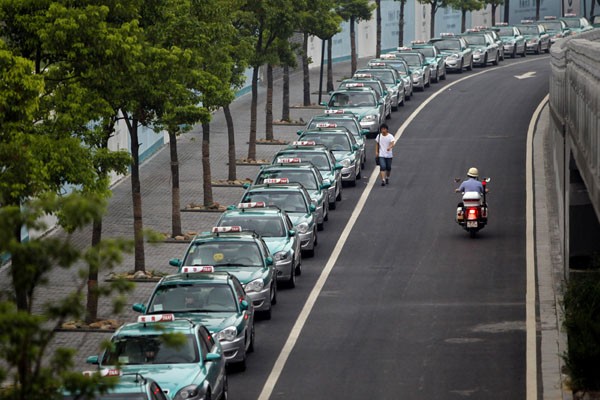The new flag-down taxi rate throughout most cities in China will increase by 1 yuan (16 U.S. cents) starting on Oct. 8, said Shanghai authorities.
The rate of 14 yuan gives commuters a lower cost compared to the current rate of 13 yuan plus 1 yuan fuel surcharge, as it stays at 14 yuan with no surcharge.
The new charge applies to the first 3 kilometers of all travels. Despite the removal of the fuel surcharge, the flag-down rate seems to be unchanged at 14 yuan.
Starting next Thursday, trips beyond the initial 3 km will change since the rate for every kilometer reached between 3 and 15 kilometers will now start at 2.50 yuan. Meanwhile, rides beyond 15 km will now cost 3.75 yuan for each kilometer after that.
The current rate charges users with 2.40 yuan for the third to 10th kilometer, and 3.60 yuan afterwards.
Unlike the regular taxis, the flag-down rate of bigger VW Touran cabs will jump to 16 yuan, 2 yuan higher than the current rate, but with the same extra charges as mentioned above.
The new charge will not apply to taxis operating only in suburban places and those that do not get fuel surcharge fees. Their flag-down rates will remain at 13 yuan.
Another rate change includes the rise on the cost of waiting from 1 km's worth for every 5 minutes, to only 4 minutes waiting time, the city's transport authority broadcast.
Although the official launch for the new taxi rates is scheduled on Oct. 8, these changes would least likely take effect until the end of the month, due to hurdles in logistics and in updating the city's over 50,000 cabs.
The city's transport authority said that the drivers will benefit from "most" of the extra income brought by this change, but it did not go into further details.
Li Xinlei, a city local, told Shanghai Daily that the move to increase taxi charges would ricochet and be perceived negatively, pushing users to prefer alternatives such as Uber.
"This will just push more people to use taxi-hailing apps rather than flag-down cabs on the street," he said.
A taxi driver by the surname Shi stated that he prefers to have a reduction in operating costs than a tad increase in the flag-down rate.
"Of course we welcome the fare rise, but for short trips it won't make much difference," he said.
"If I take 30 flag-down rides, my income will only increase by 30 yuan while my daily rental fee is about 380 yuan, and fuel costs me another 200 yuan," Shi said.



























